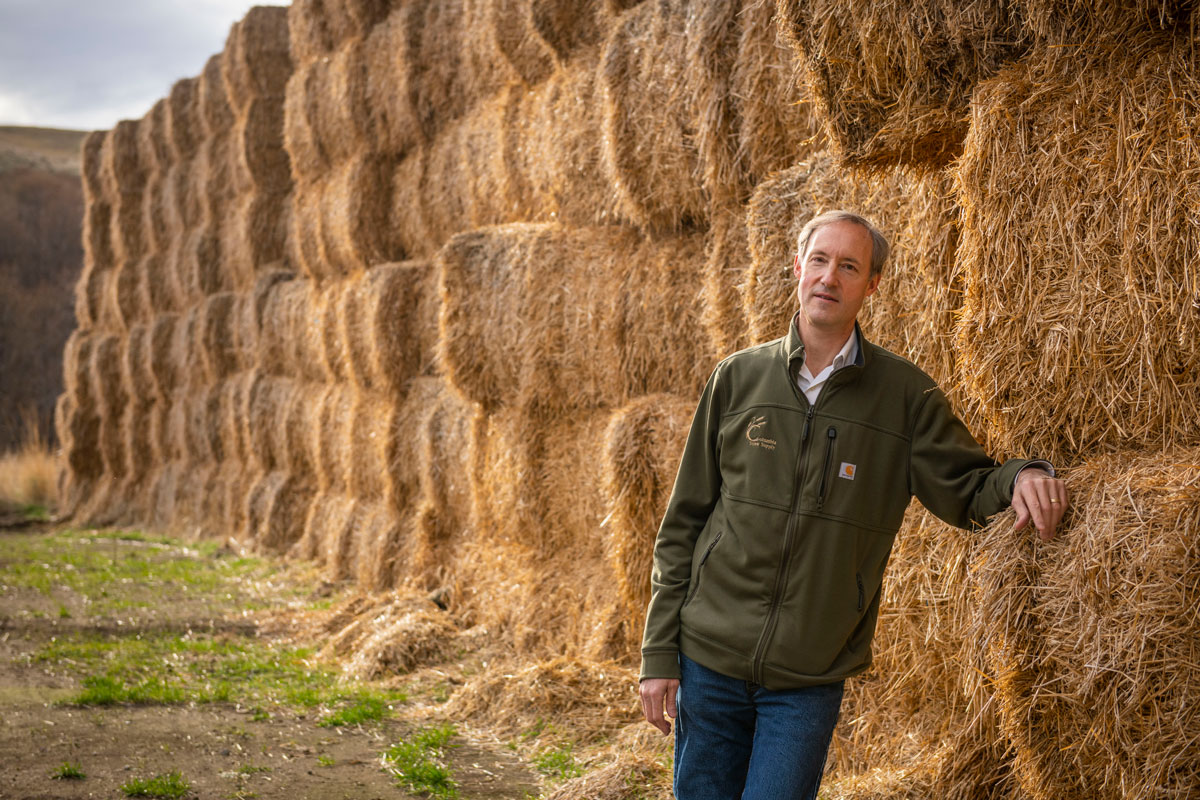Don't Cut Down Trees—Make Paper from Straw
Ben Rankin ’87 has a new use for an agricultural waste product.
In the United States alone, about 44 million acres of cropland, an area roughly the size of Oklahoma, is sown with wheat. Wheat comes in dozens of varieties, and farmers who raise it employ many different techniques to plant and grow it. After harvesting the grain, however, they all have to deal with the same headache—what are they going to do with the straw?
Straw is the tough stalk that remains in the ground after the grain has been chopped off and harvested, and for most American farmers, a field of straw is a hassle. You can set the field on fire, but that creates gargantuan plumes of smoke and carbon emissions. You can plow the straw back into the ground, but that leads to erosion and interferes with replanting. You can bale the straw for sale as cattle bedding, but unfortunately, there’s little demand for baled straw. More often it’s burned or plowed under.
Ben Rankin ’87 has helped to realize a better idea. An English major at Reed, he worked in the Seattle theatre scene for many years after graduation before shifting into the field of recycling industrial materials. For example, wood-fired boilers that recover chemicals for pulp mills produce huge quantities of boiler ash, which is rich in silica—a key ingredient of cement. Then he heard about an intriguing project in eastern Washington and wondered if he could help.
Paper is usually manufactured from wood, of course, but over the centuries it has also been made out of papyrus, hemp, bamboo, bagasse, and even rags. Ben had contacts in the paper industry who were exploring a new process to make pulp—the precursor to paper—out of straw.
With Ben’s help, they raised $190 million in financing and built a brand-new mill near Starbuck, an agricultural community in rural Washington. Columbia Pulp opened in 2019. It’s the first in the nation, and possibly the world, designed to make large quantities of high-quality pulp from straw instead of trees.
The lucky individual in charge of sourcing the straw? That would be Ben, who set up a supply company with a business partner. “I use my Reed education every day,” he says. “A project like this has a bunch of stakeholders, sometimes with competing interests. You’ve got to be able to communicate clearly, think fast, identify solutions, find common ground, and think analytically—that’s stuff I learned to do at Reed talking about Plato or Renaissance art.”
Fortunately, the local community has been very supportive. Before the mill came along, farmers there burned hundreds of thousands of acres of straw every year, generating 45,000 tons of atmospheric pollution. “The growers are delighted to have a new option,” he says. Now they can earn extra revenue from the straw.
Columbia Pulp and its partners now turn straw into cardboard, towels, tissue, and paper—in fact, we used their paper to print the March 2021 issue of Reed Magazine.
The pandemic, along with typical start-up challenges, has temporarily halted production, but Columbia’s executives expect the mill to reopen in May. In the meantime, Ben has stockpiled roughly 150,000 tons of straw bales, which are currently stacked 21 feet high on several hundred acres near the mill.
Fortunately, there’s plenty of room out there.
